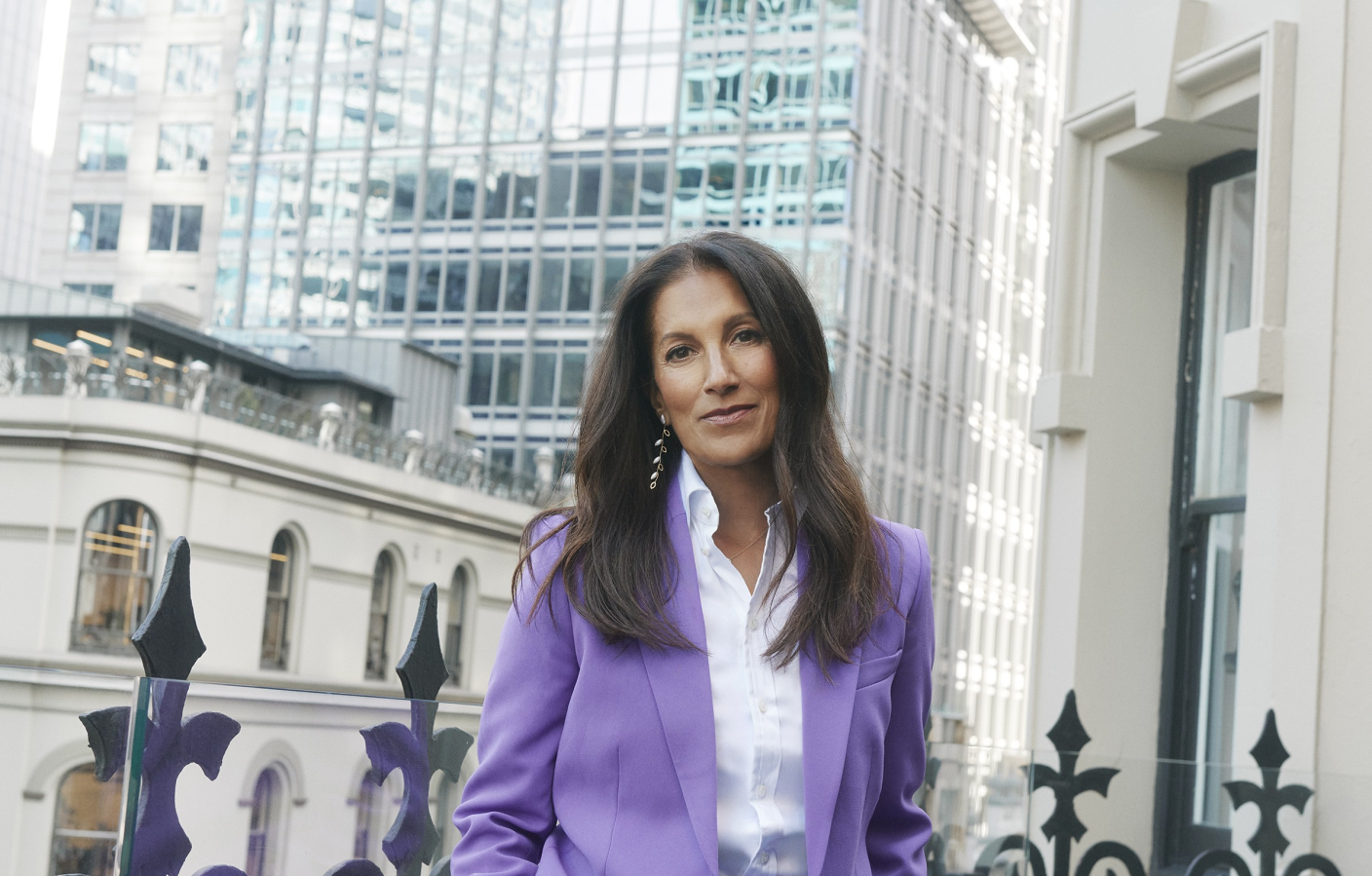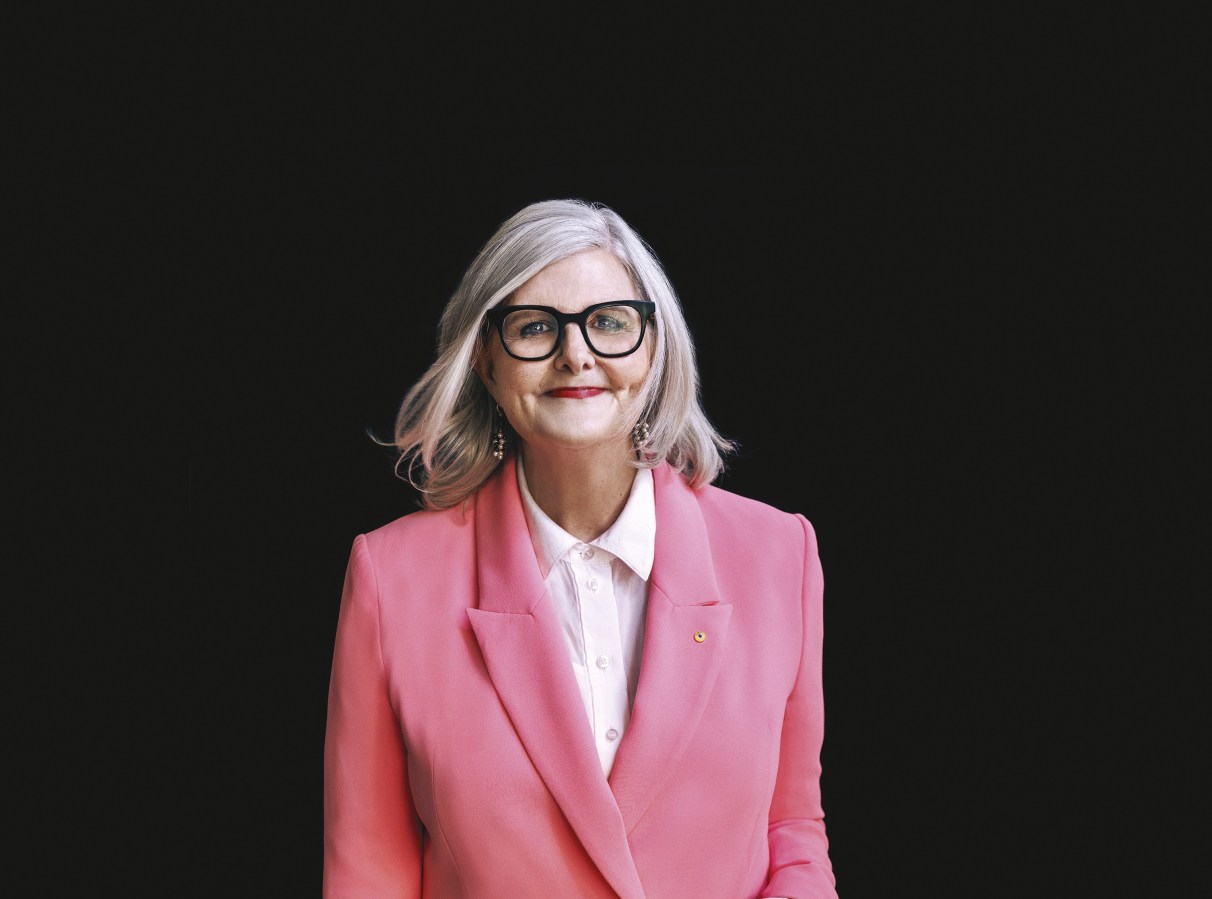Shards are tumbling from the glass ceiling, as top female CEOs outearn their male counterparts. Data journalist Juliette O’Brien finds the women and companies which are leading the way – with a BIG caveat – a woefully disproportionate CEO-gender ratio.
This article was featured in Issue 11 of Forbes Australia. Tap here to secure your copy.
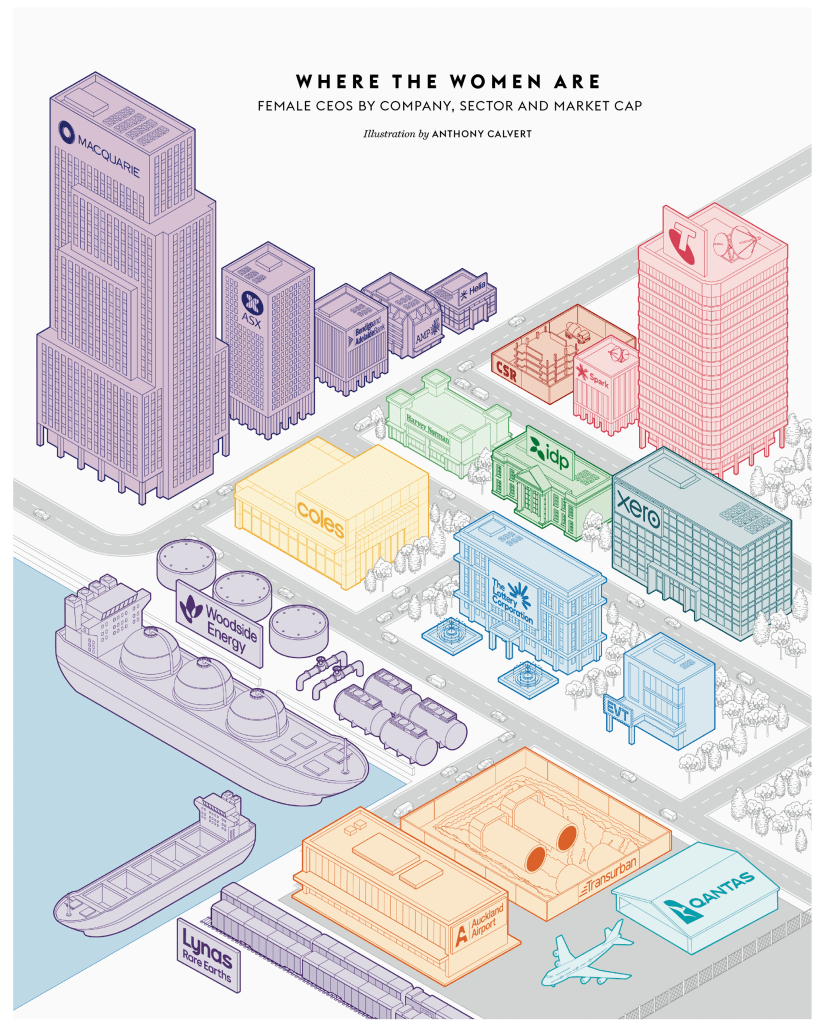
Female CEOs might be thin on the ground, but those who have reached the top job are making bank. That’s what researchers at MSCI found in its latest Women on Boards and Beyond report.
An analysis of the MSCI All Country World Index (ACWI), which covers roughly 3000 stocks from 23 developed and 27 emerging markets, showed CEO salaries and equity awards were equal across genders. Men tended to edge women in bonuses and options, which led to a higher average total pay across the index. But that failed to change the outcome in Australia and New Zealand, where women came out on top (Charts 1 & 2).
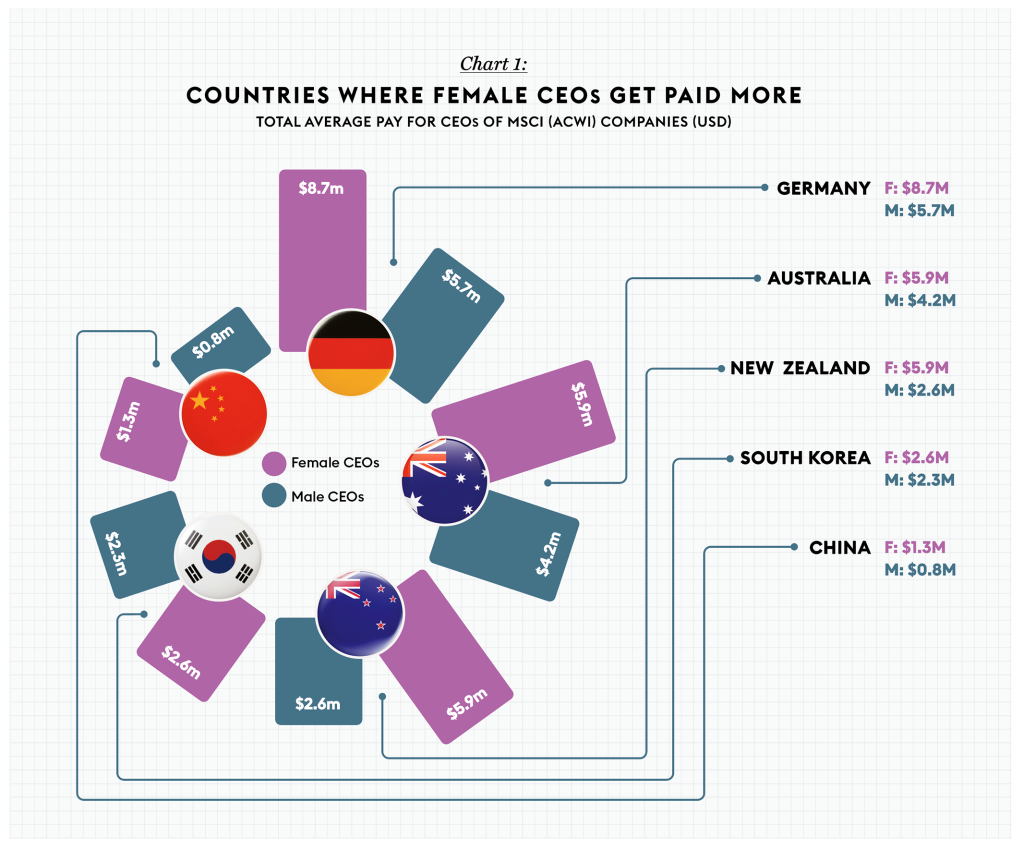
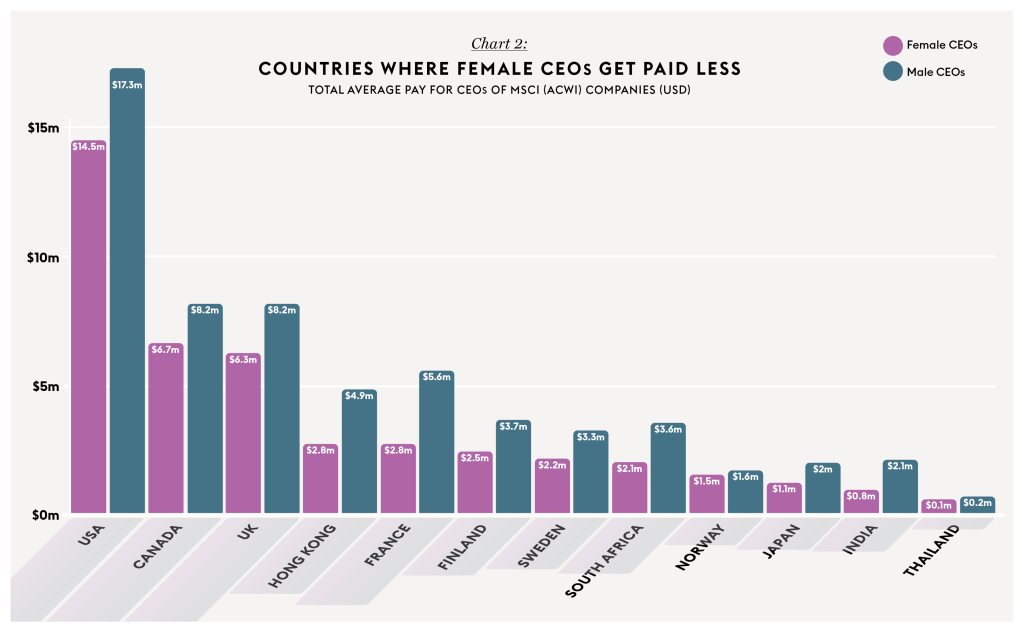
In Australia, female CEOs out-earned men $8.9 million to $6.3 million. New Zealand companies paid women more than double, $8.9 million compared with $3.9 million. The results, however, should be digested with a full understanding of the nuances of the data. While the MSCI (ACWI) is a global equity benchmark, the results are subject to a still extremely disproportionate CEO-gender ratio. Around 6.5% of CEO positions among MSCI (ACWI) constituents were held by women. The male to female split in the analysis was 2255 to 165.
“The presence of female CEOs in various markets is indeed limited, reflecting a broader gender imbalance in corporate leadership roles,” said a spokesperson for MSCI ESG & Climate Research. “Despite year-over-year incremental progress, women remain underrepresented at the CEO level.” This presents a data quandary, as small samples are more sensitive to outliers. A few high or low salaries among 165 female CEOs can skew the results.
Shemara Wikramanayake is Australia’s highest paid CEO by a country mile. The Macquarie Group boss made a whopping $30.4 million in 2023 across her salary and incentives (Chart 3).
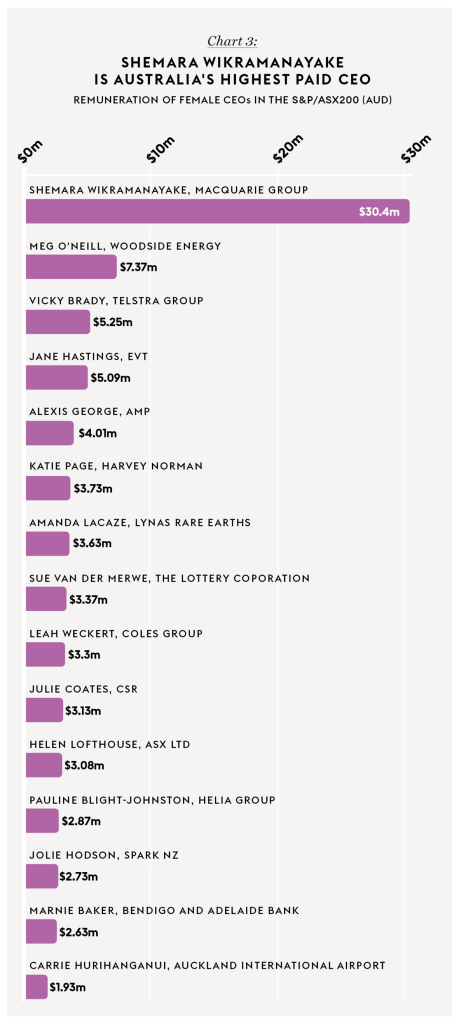
What’s more, Australian data shows women are more likely to lead large companies. One in four companies on the S&P/ASX20 have a female CEO – 25%. That percentage falls as the pool of companies grows, from 13% on the ASX100, to 10% on the ASX200, to 8% on the ASX300 (Chart 4).

Perhaps a fairer comparison is the median remuneration for CEOs on the S&P/ASX20. That still puts women ahead but by a closer margin, with a median of $6.3 million compared with $6.2 million for men (Chart 5). It’s clear that Australia’s biggest companies are leading the way on CEO gender equity, in terms of both representation and remuneration.
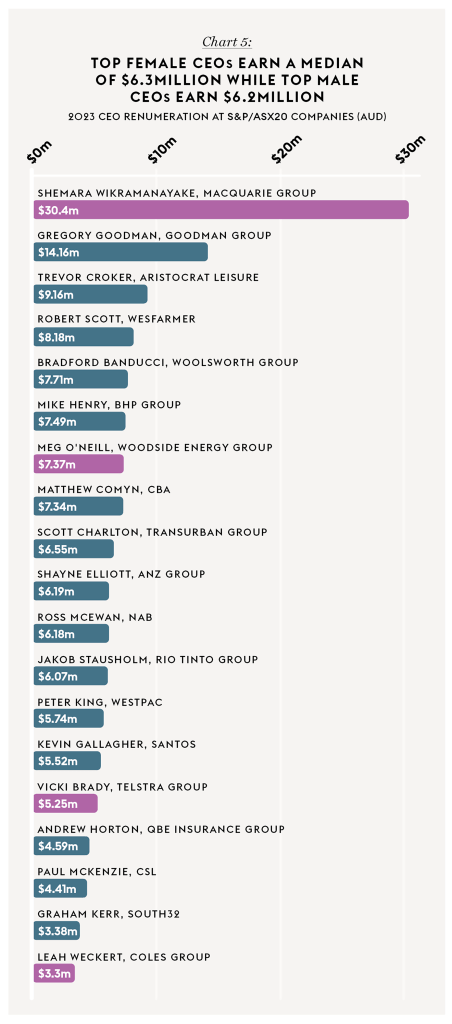
Chief Executive Women (CEW), a peak body supporting women entrepreneurs and corporate leaders, says there is a clear reason why bigger companies are doing better. “There appears to be a strong relationship between public accountability and progress of gender equality in leadership,” the organisation said in its Senior Executive Census 2023. “Scrutiny is good for gender equality.”
Are you – or is someone you know -creating the next Afterpay or Canva? Nominations are open for Forbes Australia’s first 30 under 30 list. Entries close midnight, July 15, 2024.
Look back on the week that was with hand-picked articles from Australia and around the world. Sign up to the Forbes Australia newsletter hereor become a member here.


